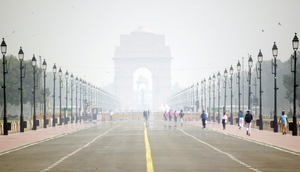New Delhi: Delhi-NCR’s air quality remained severely poor for the third consecutive day, with the national Capital’s Air Quality Index (AQI) reaching a severe level of 409 early on Friday morning and the readings being above the 300 mark in neighbouring cities in Haryana and Uttar Pradesh.
According to the Central Pollution Control Board (CPCB), the region continues to suffer from hazardous pollution levels as winter approaches, with many of the cities in Delhi’s neighbourhood registering dangerously high AQI values.
As of 6:15 A.M., data from the CPCB indicated an average AQI of 409 in Delhi, categorised as “severe,” meaning it poses a significant health risk to residents.
In the broader Delhi-NCR region, AQI levels were also problematic. Haryana’s Faridabad recorded an AQI of 283 and Gurugram 314 while Uttar Pradesh’s Ghaziabad saw an AQI of 332, Greater Noida 258, and Noida 328, placing them in the “very poor” category.
Within Delhi, 25 neighbourhoods reported AQI levels between 400 and 500, a range classified as “severe.” Notable areas with particularly high readings included Jahangirpuri (458), Bawana (455), Wazirpur (455), Mundka (449), Dwarka Sector 8 (444), and Punjabi Bagh (443).
Other areas, such as Anand Vihar (441), Ashok Vihar (440), and the IGI Airport area (440), also showed AQI levels well above 400, highlighting the pervasive nature of the pollution crisis across the national Capital.
In addition, 14 neighbourhoods across Delhi recorded AQI readings in the “very poor” range, between 300 and 400. These areas included Alipur (398), Burari Crossing (383), Chandni Chowk (347), Mathura Road (368), and Jawaharlal Nehru Stadium (374).
As the region grapples with severe pollution, daily life for residents is increasingly affected, with many experiencing respiratory issues, eye irritation, and persistent coughs.
The situation is so severe that people across the capital and neighbouring NCR areas are resorting to use of masks and air purifiers in a bid to protect themselves from the toxic air.
–IANS


Comments are closed, but trackbacks and pingbacks are open.